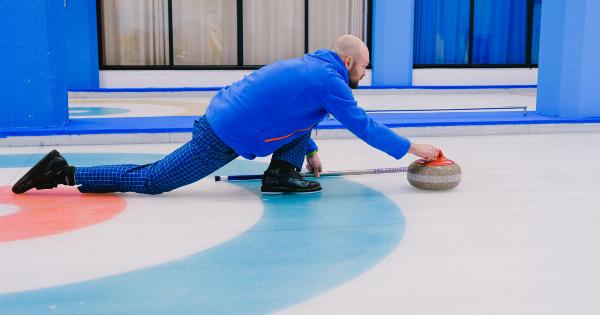Running is a popular form of exercise that provides a range of health benefits. It can help improve cardiovascular health, relieve stress, and boost mood. However, one common issue that many runners experience is known as runner’s knee.
Runner’s knee is a condition that can cause pain and discomfort in the knee area, preventing runners from continuing their training regimen. In this article, we’ll take a closer look at runner’s knee, its symptoms, causes, and treatment options.
Symptoms of Runner’s Knee
The main symptom of runner’s knee is pain around the kneecap. The pain may be dull, achy, or sharp, and can worsen when bending the knee or performing activities such as running, jumping, or squatting.
Other symptoms of runner’s knee may include:.
- Sensation of popping or grinding in the knee
- Sensation of the knee giving way or buckling
- Swelling or stiffness in the knee
- Tenderness around the knee area
Causes of Runner’s Knee
Runner’s knee can occur due to a variety of factors, including overuse, injury, and biomechanical issues. The following are some of the most common causes of runner’s knee:.
- Overuse: Running frequently or for long periods without proper rest and recovery time can lead to runner’s knee. The repetitive motion of running can cause irritation and damage to the cartilage and soft tissue in the knee.
- Injury: Trauma or impact to the knee can cause damage to the kneecap or surrounding tissue, leading to inflammation and pain.
- Biomechanical Issues: Poor running form, such as overpronation or flat feet, can lead to improper alignment of the knee joint, causing stress and strain on the knee.
- Tight Muscles: Tight muscles, particularly in the hips, hamstrings, and quadriceps, can put additional strain on the knee joint during running, increasing the risk of developing runner’s knee.
Diagnosis of Runner’s Knee
Runner’s knee can be diagnosed through a physical examination and a review of the patient’s medical history. The doctor may ask questions about the patient’s symptoms, running routine, and any previous injuries or medical conditions.
They may also perform tests such as X-rays, MRIs, or CT scans to check for any structural damage or abnormalities in the knee.
Treatment Options for Runner’s Knee
The treatment for runner’s knee depends on the severity and underlying cause of the condition. The following are some common treatment options for runner’s knee:.
- Rest and Recovery: Taking a break from running and allowing the knee to rest and recover can help reduce inflammation and pain. This may involve reducing the frequency or duration of running sessions, or temporarily switching to low-impact exercises such as swimming or cycling.
- Ice and Heat Therapy: Applying ice or heat to the affected knee can help reduce swelling and alleviate pain. Ice packs can be applied for 15-20 minutes at a time, several times a day, while heat therapy can be used in the form of a warm compress or heating pad.
- Physical Therapy: A physical therapist may recommend exercises to help strengthen and stabilize the knee, as well as improve flexibility and range of motion. This may include stretches, foam rolling, and strength training exercises targeting the hips, quadriceps, and hamstrings.
- Orthotics: Wearing orthotic inserts or shoes with proper support can help improve alignment and reduce stress on the knee joint. This may be particularly helpful for those with flat feet or overpronation.
- Medication: Over-the-counter pain relievers such as acetaminophen or ibuprofen can help reduce pain and inflammation in the knee. In some cases, corticosteroid injections may be recommended to reduce inflammation and pain. These should only be administered by a healthcare professional.
Prevention of Runner’s Knee
Runner’s knee can be prevented through proper training and injury prevention measures. The following are some tips for preventing runner’s knee:.
- Warm Up and Cool Down: Always start your running session with a proper warm-up routine, including dynamic stretches, and finish with a cool-down routine such as static stretches.
- Incorporate Strength Training: Include exercises that strengthen the hips, glutes, quadriceps, and hamstrings in your workout routine to improve stability and reduce stress on the knee joint.
- Wear Proper Shoes: Make sure to wear running shoes that fit well and provide proper support and cushioning for your feet.
- Gradually Increase Intensity: Avoid increasing your running intensity too quickly, and give your body enough time to adjust to any changes in distance or intensity.
- Take Rest Days: Allow your body enough time to rest and recover between running sessions, and avoid running every day.
Conclusion
Runner’s knee can be a frustrating and painful condition for runners, but it can be prevented and managed with proper training, injury prevention, and treatment options.
If you experience symptoms of runner’s knee, it’s important to seek medical attention and rest your knee to allow for proper healing. By taking care of your body and practicing prevention measures, you can continue to enjoy the benefits of running without the risk of developing runner’s knee.
























